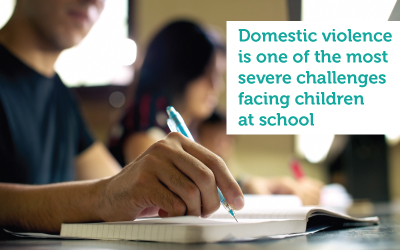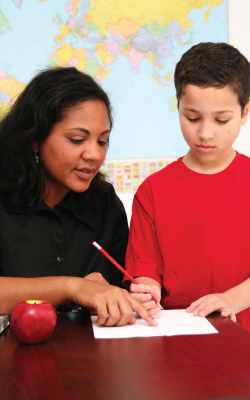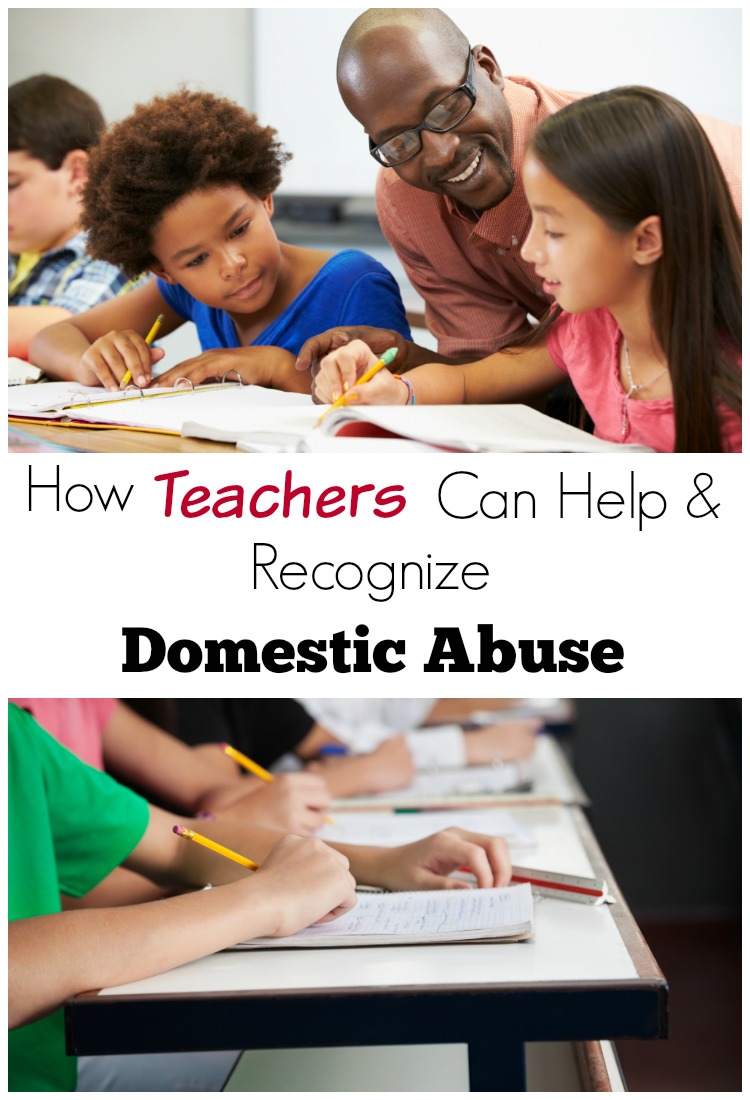Domestic Abuse: How Teachers Can Help
Children spend such a large chunk of their time in school. Because of this, teachers are often in some of the best positions to be able to recognize when something is wrong. Signs of domestic abuse occurring at home can be more obvious to educators than they might first think, and training on how to recognize domestic violence should be a priority.
Students of all ages often deal with many challenges outside of school and these can all have a huge impact on their ability to learn as well as their behaviour.
Domestic violence is one of the most severe challenges facing children at school. Along with difficulties at home, it can really affect their ability to perform well in school, focus on tasks, complete assignments, or even form strong social relationships.
Most teachers are not specifically trained on how to look for domestic violence warning signs, and this is an area for improvement. Domestic violence and abuse is a big challenge that some students face on a daily basis, one that affects them before they even walk through the school doors. Everyone from teachers to support staff like guidance counsellors, learning resource helpers and administrators can help support students and offer additional supports when there are worrisome observations. The school can connect with social workers, police services and CAS depending on the issue and the age of the student.
We’ve outlined some typical warning signs of domestic violence. The abuse could also be happening in a romantic relationship, which would be more commonly seen at the high school level. Keep in mind that these are just general warning signs of domestic abuse for teachers and are not necessarily indicators that a child is experiencing abuse at home.
These domestic violence warning signs for teachers are meant as a guideline to help you understand some of the more common signs if you suspect a child/student might be experiencing some form of abuse - physical, sexual, emotional, verbal.
- Frequent bruising, marks or other signs of physical abuse
- Poor attendance
- Lack of engagement
- Isolation and lack of engagement of peers
- Heightened anxiety & responses to situations which are disproportionate to the situation (i.e. high level of anxiousness about the school contacting a parent over a minor issue)
- Difficulty regulating emotions and anger
- Engaging in risky behaviour or unhealthy relationships
It’s also important to remember that it’s possible for a child to not show any of the more ‘common’ traits. He or she might be incredibly compliant, working hard to please the adults in an attempt to avoid any issues or draw any attention to his or her home environment.
Anytime a student doesn’t feel safe or welcome in a learning environment, there’s a significant impact on their ability to reach their full potential. As educators, it’s crucial to be knowledgable on and aware of domestic violence warning signs and make sure that we are supporting all children and students in every way possible, seeking further help if necessary.
The more in tune educators are with these issues and barriers, the better they are able to building trusting relationships with these students and help them.
Training options for teachers in Ontario:
For the last few years, the Equity and Women’s Services at the Elementary Teachers’ Federation of Ontario (ETFO) have sponsored three, two-day workshops a year for educators on the effects of woman abuse on children. Teachers from jurisdictions throughout the province, come together and learn about the dynamics of woman abuse and its impact on children, what signs students may display when they are living with woman abuse, and how this form of violence exposure may affect their readiness and ability to learn in terms of literacy, numeracy, and social skills. Case studies and exercises are used to identify and illustrate ways to support students touched by woman abuse and deal with challenging behaviours in school. Teachers leave with resources developed by ETFO in collaboration with leaders in the field of gender-based violence and school-based prevention. For more information, contact Carol Zavitz (czavitz@etfo.org)
 Springtide Resources have developed Be Aware, Prepare, Educate for elementary educators (teachers and early childhood educators) in Ontario. It explores the impact of children's exposure to woman abuse, educators' legal obligations to students who are exposed to woman abuse, and how educators can make a difference in the lives of such students.
Springtide Resources have developed Be Aware, Prepare, Educate for elementary educators (teachers and early childhood educators) in Ontario. It explores the impact of children's exposure to woman abuse, educators' legal obligations to students who are exposed to woman abuse, and how educators can make a difference in the lives of such students.

